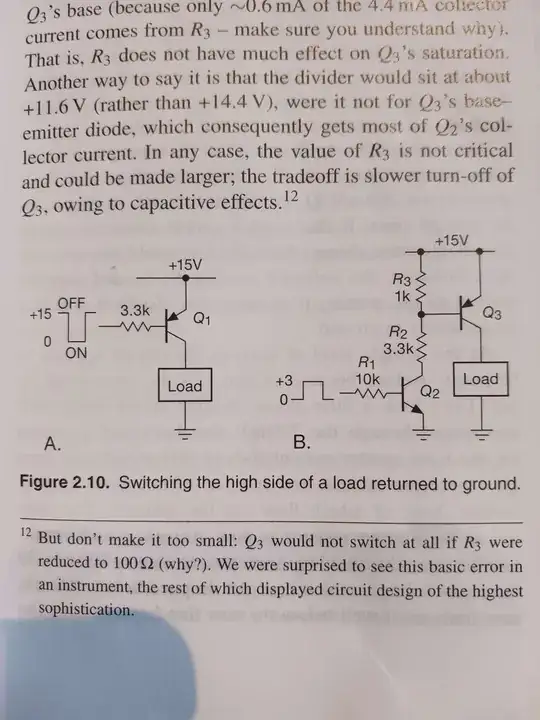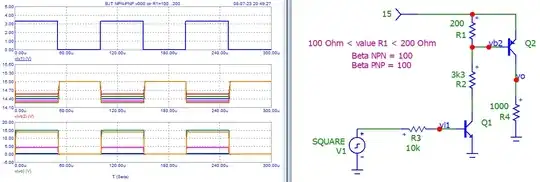This is a portion of p.77 from The Art Of Electronics 3rd Edition. In the footnote, the authors say that R3 cannot be equal to 100ohms or Q3 will not turn on. Why is that? My understanding is that the max current when the Q3 is ON is limited by the 3.3k resistor (4.3mA assuming voltage drop of 0.7 across emitter-base) . This current would lead to a voltage drop of 0.4V on R3 (if all the current was provided by R3) which is not enough to forward bias the emitter-base junction. Is this the correct analysis?
Asked
Active
Viewed 88 times
2
-
1To open the BJT we need to have 0.6V. With R3 = 100Ω we have 15V * 100Ω/(3.3kΩ + 100Ω) = 0.441 . – G36 Jul 08 '23 at 18:37
-
3Duplicate of Why would the transistor not switch? – CL. Jul 08 '23 at 18:44
1 Answers
2
Here is some simulation showing the behavior.
Case of load R4 = 1000 Ohm. Beta NPN and PNP = 100.
The "light blue" curve ( v(vo) ) is for R1 = 200 Ohm.
The "orange" curve ( v(vo) ) is for R1 = 180 Ohm.
Antonio51
- 13,128
- 1
- 7
- 22

